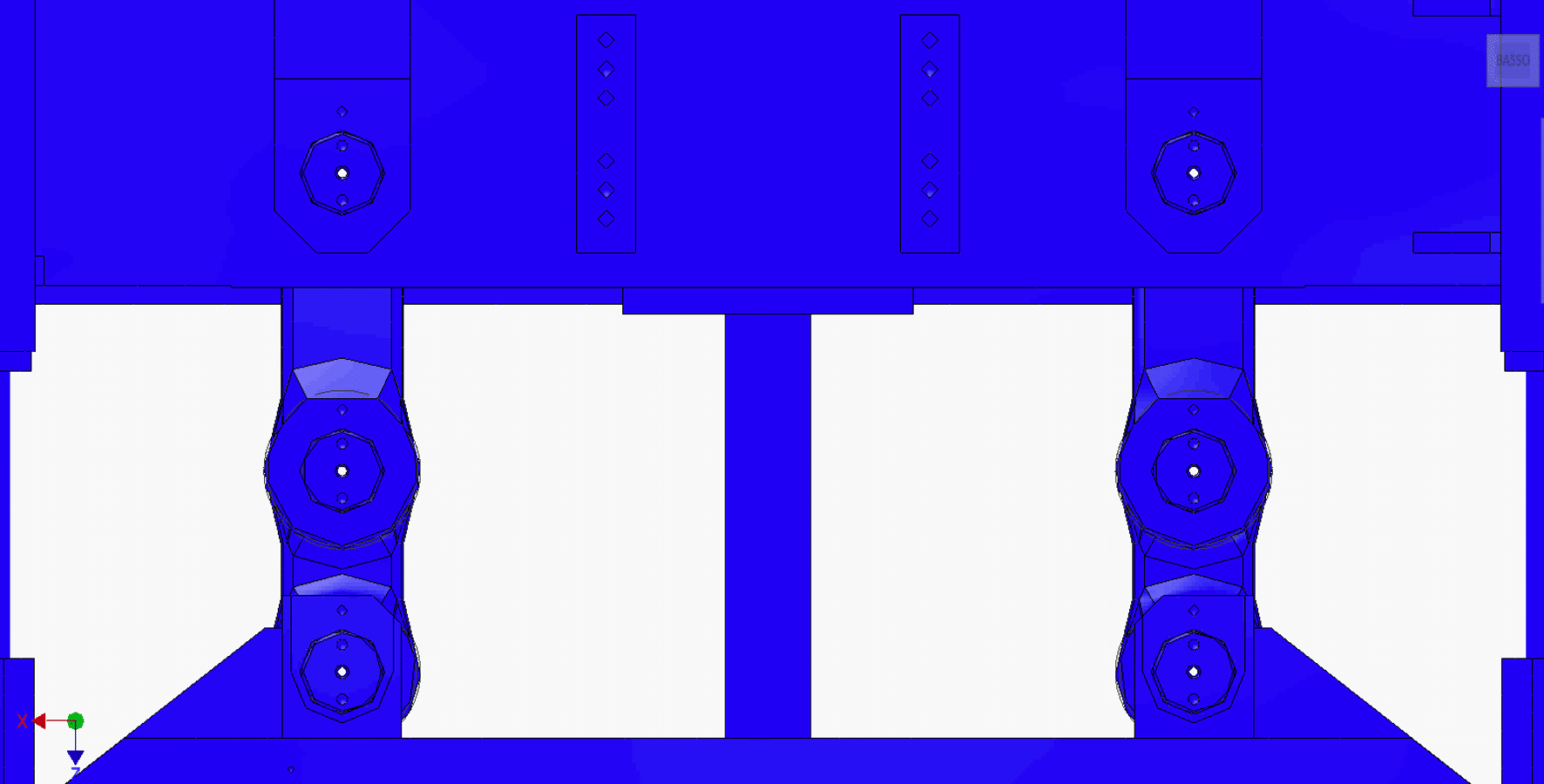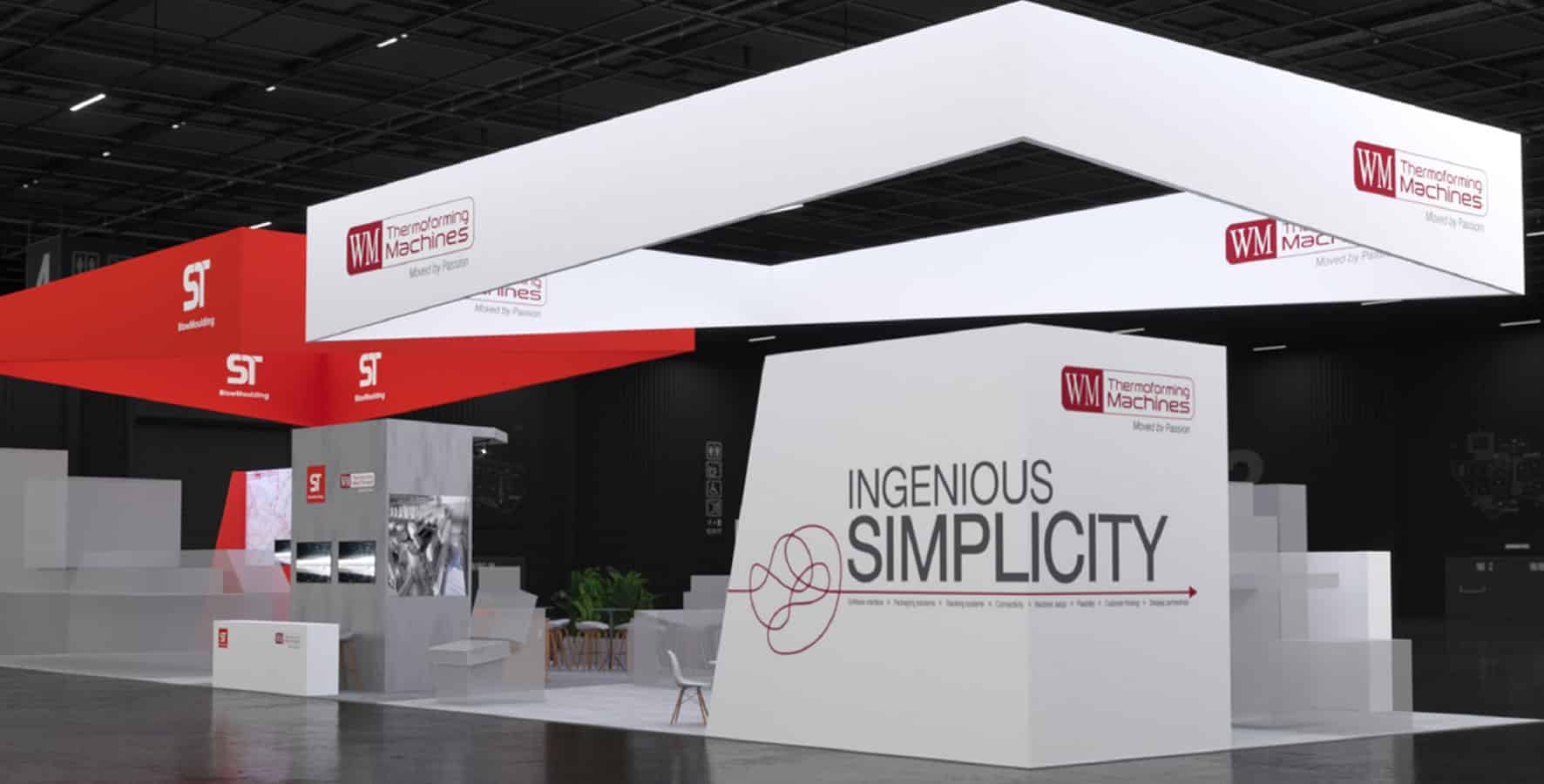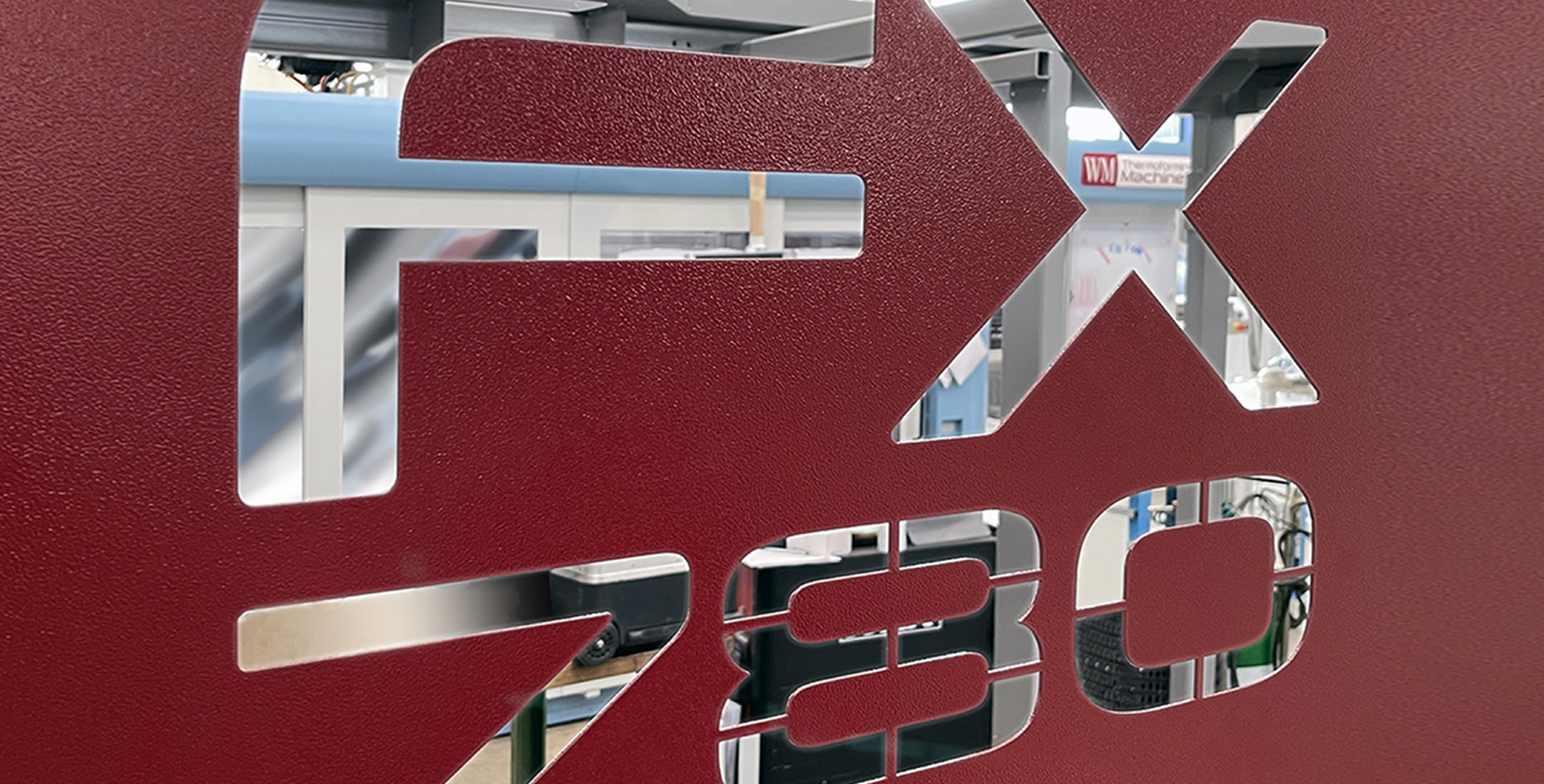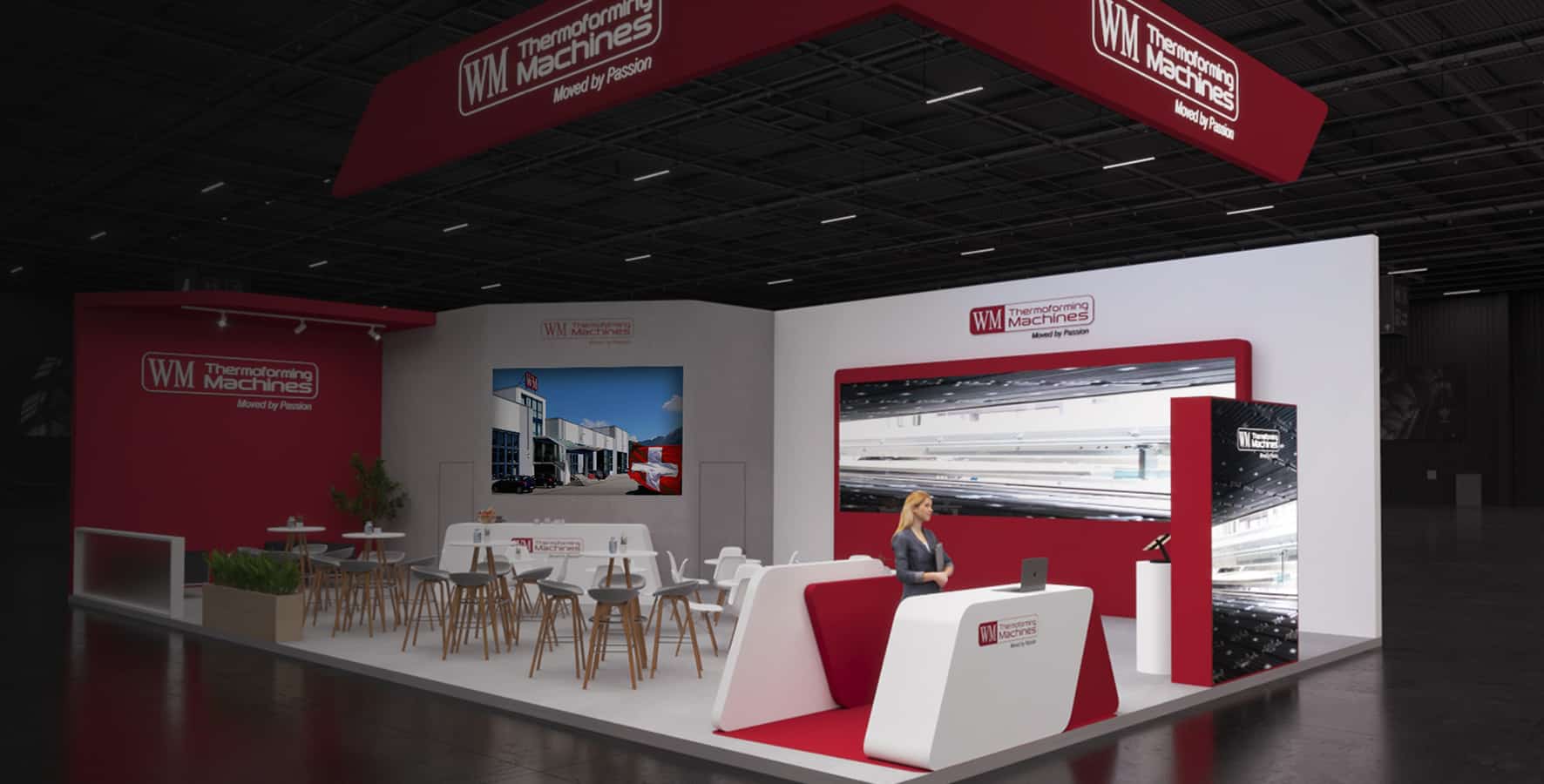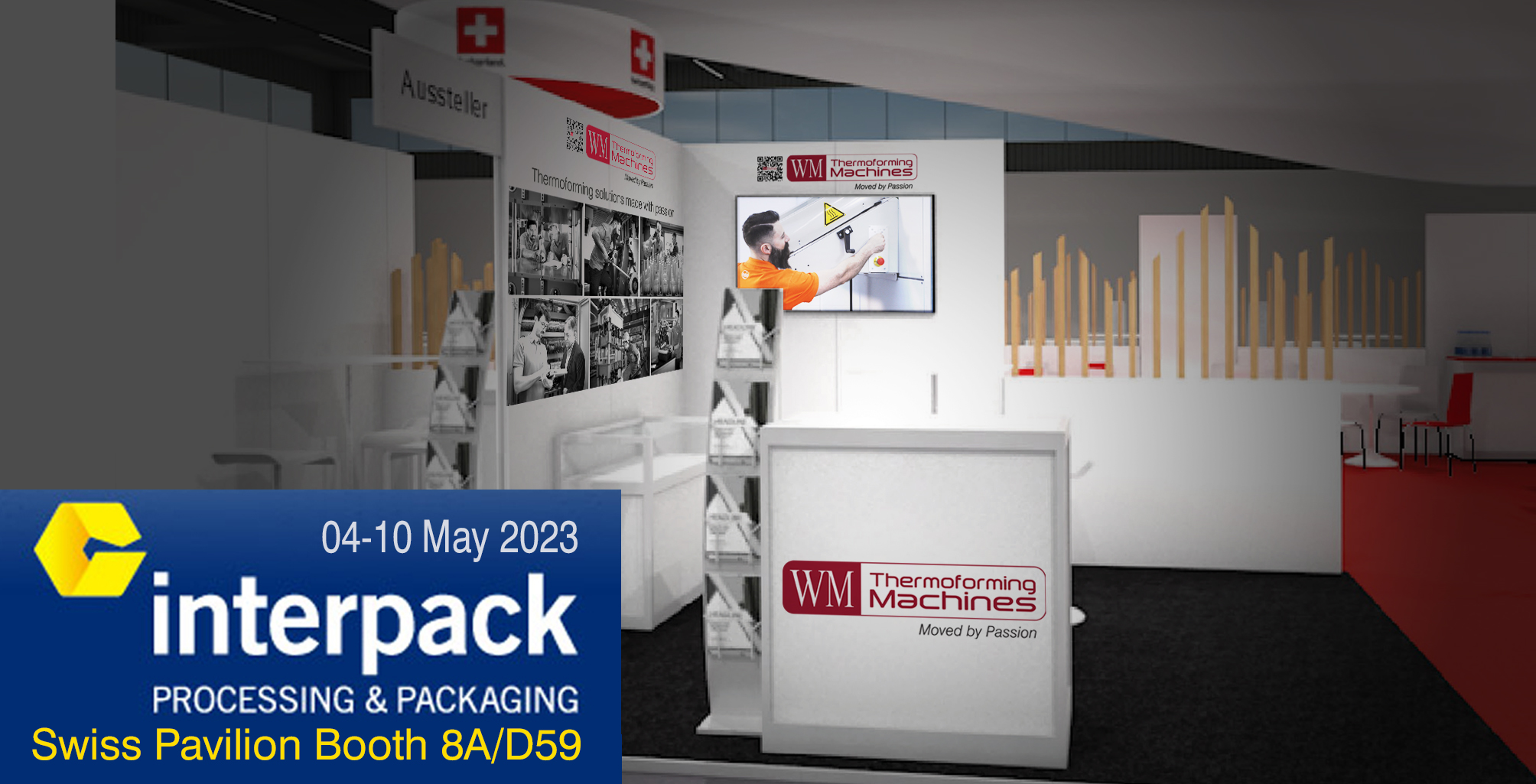Trimming quality, when dealing with a thermoformed and die cut item, is one of the determining factors in the general definition of product quality.
For this reason, thermoforming machine manufacturers absolutely must dedicate special attention to the design phase of the units that will determine the best possible trim.
The closing force value of the machine forming and cutting stations is therefore the result of careful mechanical sizing which must always take into consideration the multiple kinetic and mechanical aspects that come into play.
Years of trials, experience and constant evaluations have led WM’s Technical Design Office to establish “rigidity” parameters for their machines which guarantee proper closing unit function regardless of the force built up by the machine.
As we know, the moment the mould halves close, the machine is subjected to the workload, which produces forces and reactions that move from the moving platen to the linkage, from the linkage to the stable platen, and from there to the columns.
The following image shows a simplified example of platen “rigidity”.
These forces produce elastic deformation in the various parts, be they bending, compression or traction.
All these deformations together lead to an overall deterioration which much be contained as much as possible to guarantee a cut which we can define as “the perfect cut”.
In the end, the very containment of this overall deterioration is what determines thermoforming machine quality.
Given a determined closing force of the machine which depends on the platen/mould dimensions, the main design goal is to reach the pre-set overall rigidity factor which limits overall deterioration of the various parts involved in the moulding operation.
In the following brief video, we have attempted to simulate the deformation effect, obviously greatly magnified to make it easier to see.
At the same time, we must consider that these elastic deformations occur during each cycle at a pulsating pace equal to the machine’s work frequency.
The mechanical parts are thus subjected to a load that, over time, would lead to fatigue-induced breaking.
Even in this case, WM has selected a high parameter (safety coefficient) regarding component service life, much higher than dictated by common design standards.
The following diagram shows the characteristic fatigue curve that correlates a component’s stress status compared to its duration over time.
The design developed by WM Wrapping Machinery is set to always remain far below the fatigue limit (horizontal line of the curve), thus guaranteeing proper and constant functioning over the years.
Taking all the aforementioned factors into account in the building phase mean obtaining a machine that is not simply robust but above all balanced, reliable and durable with nearly unchangeable performances over time.
When one of our customers say us, “WM machines cut well”, he is merely simplifying a concept and recognising the validity of the research behind our designs.



